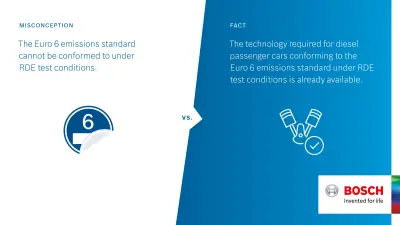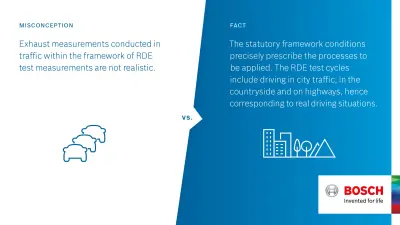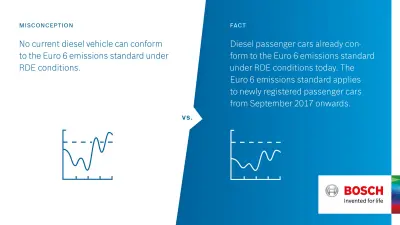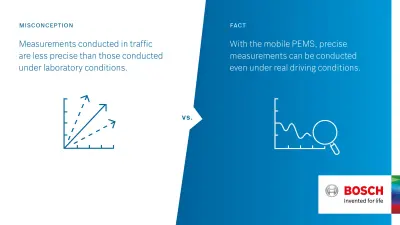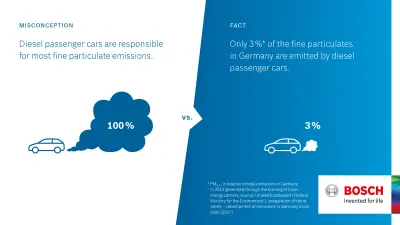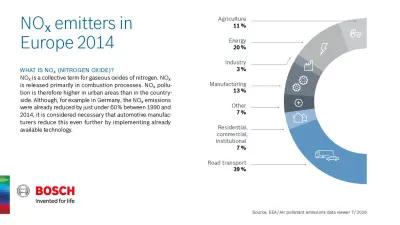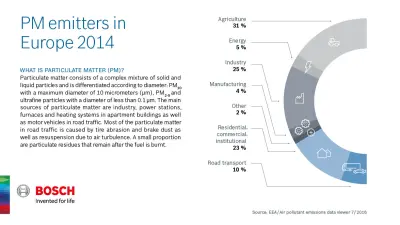Real Driving Emissions: New measurement methods for better air quality
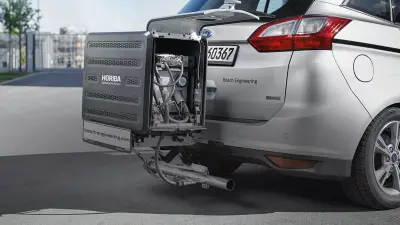
Accelerations, gradients, stop-and-go, higher speeds — since September 1, 2017, it has been obligatory to measure passenger car emissions under real conditions. In an interview, Bosch powertrain developer Dr Andreas Kufferath explains what RDE is about.
Mr. Kufferath, what does RDE mean and what does it change?

Emission measurements under real operating conditions can make a significant contribution to better air quality. Furthermore, the discrepancies between emission values determined in the laboratory and emission values produced on the road with driving profiles can be reduced because they take greater acceleration into account, along with gradient, stop-and-go, or higher speeds. To ensure a technological transition, the EU Parliament adopted “conformity factors” (CF). From 2017 (phase 1 of RDE), this factor will be CF 2.1 — this means that a vehicle may initially emit 2.1 times as much as it does when tested under laboratory conditions – whereby the vehicle is driven on a real road, where the driving situation described above can arise, leading to increased emissions. From 2020 (phase 2 of RDE), the wconformity factor will be reduced to 1.5.
When will the new measurement methods be introduced and for which models?
Bosch has actively supported the introduction of RDE measurements in recent years. The first phase of RDE will begin on September 1, 2017. After this date, new passenger car models (light utility vehicles such as transporters) must comply with RDE requirements.
Requirements for the RDE trip
Duration of measurement trip: 90‒120 minutes
Route: 1/3 urban driving, 1/3 highway, 1/3 freeway, total gradient: (<1200 m/100 km)
Ambient temperatures: between -7° C and 35°C
How reliable are the PEMS measurements?
Until now, vehicles were only tested in the laboratory to verify compliance with legal requirements. The technology required for these measurements would more or less fill an industrial container. The PEMS measuring instrument (PEMS stands for Portable Emissions Measurement System), however, is around half the size of a large packing case. The advantage of the new measurement equipment is that emissions can be measured directly from the exhaust in the real environment rather than in a laboratory situation. Measurements taken in a car being driven have certain measurement inaccuracies, which are taken into account in the legislation. The conformity factor means that a vehicle may only emit 1.5 times as much as in the test carried out under laboratory conditions in the second RDE phase. In the regulation it is broken down as follows: 1 + 0.5. The 0.5 takes the measurement uncertainties of the PEMS system into account. These are also attributable to the measurement method, because the repro-ducible conditions of a laboratory do not exist in a real driving situation.
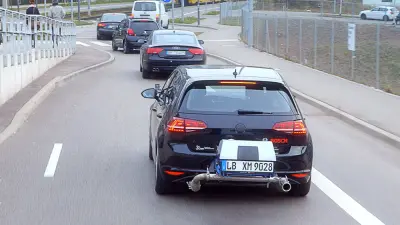
RDE on the test bench — fact check
“Exhaust measurements conducted in traffic will mean greater clarity and reliability for customers. The RDE requirements will also accelerate fleet replacement with particularly low-emission Euro 6 vehicles and thus the improvement of air quality.”
So are discrepancies between the laboratory and reality a thing of the past?
RDE measures particulate matter and nitrogen oxide emission values in real traffic. Consumption (CO₂) will continue to be tested on the chassis dynamometer test bench. The possibility of also measuring consumption with tests conducted in real traffic is currently under discussion. However, there are a great many questions regarding the comparability of data still unanswered. In the case of RDE measurements, there are many conditions on the road that cannot be standardized. Weather conditions, topgraphy, and personal driving style can vary significantly in the test trip.
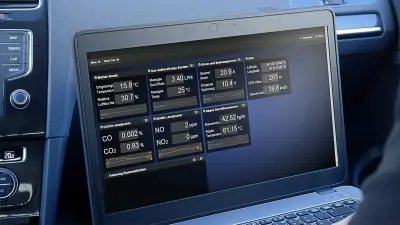
What will the consequences of the introduction be for consumers?
Exhaust measurements conducted in traffic will mean greater clarity and reliability for customers. The RDE requirements will also accelerate fleet replacement with particularly low-emission Euro 6 vehicles and thus the improvement of air quality.
Will cars require a technical upgrade?
A vehicle upgrade is not required at present. The RDE regulation applies to all new vehicle models approved after September 1, 2017 — in other words to all new vehicle models that come onto the market after September 1, 2017.
Trend of emissions in Europe 1990 to 2014
Dr.-Ing. Andreas Kufferath

Dr.-Ing. Andreas Kufferath, head of department at Robert Bosch GmbH, is responsible for the powertrain technologies development department. He was previously head of department in the Gasoline Systems division, Combustion System Engineering.
